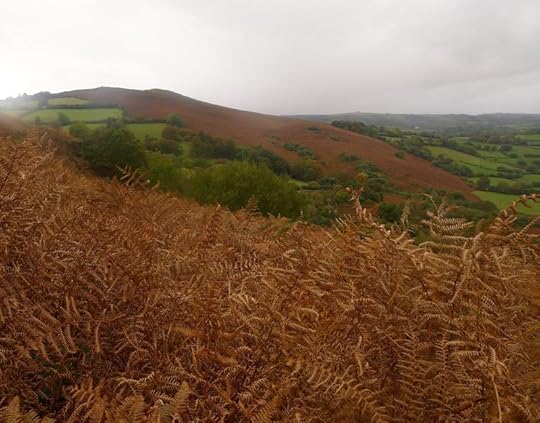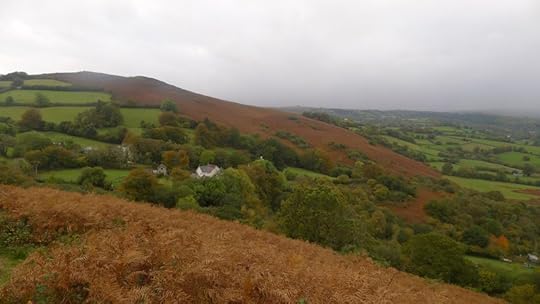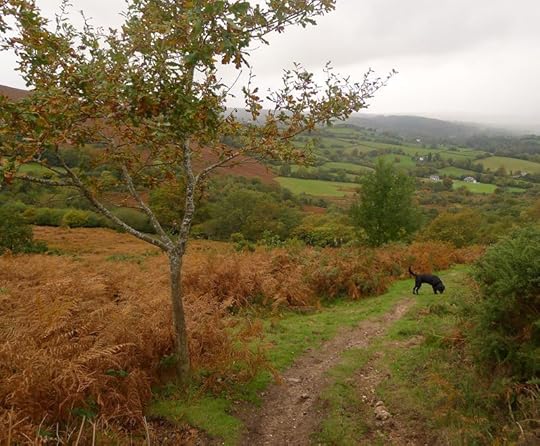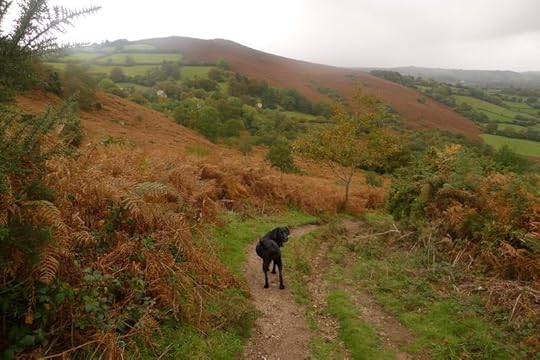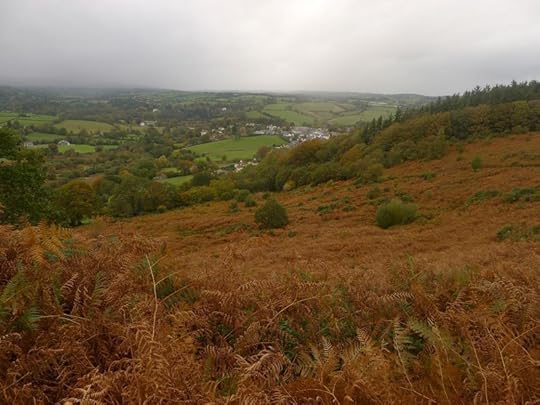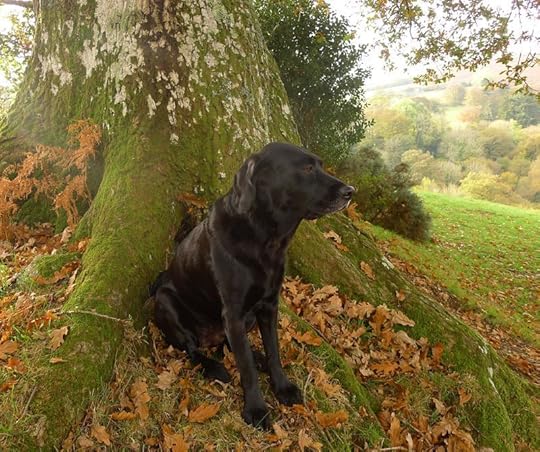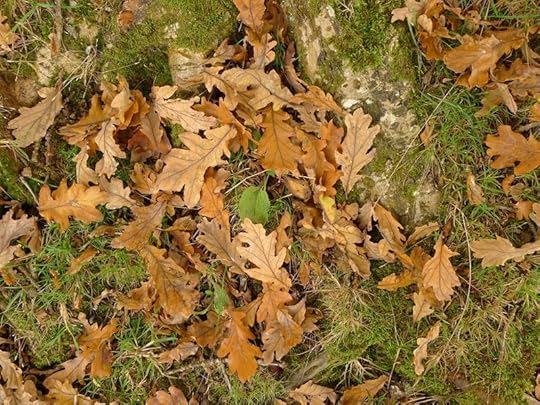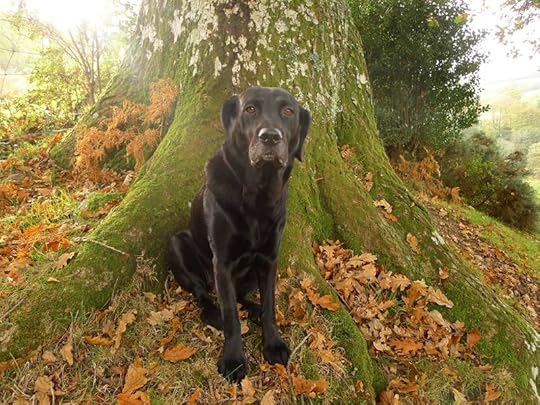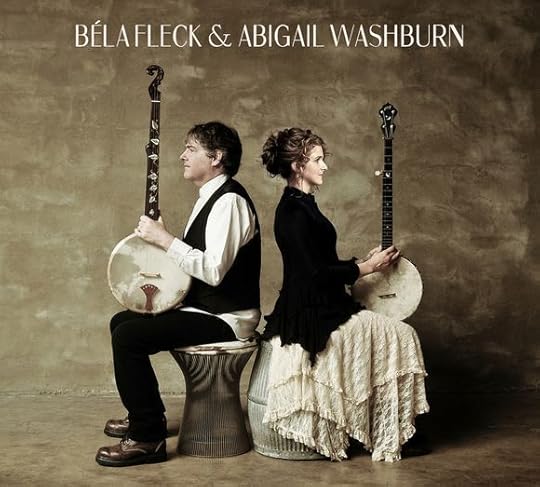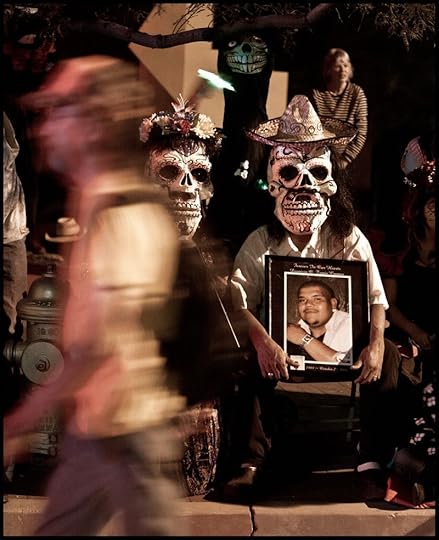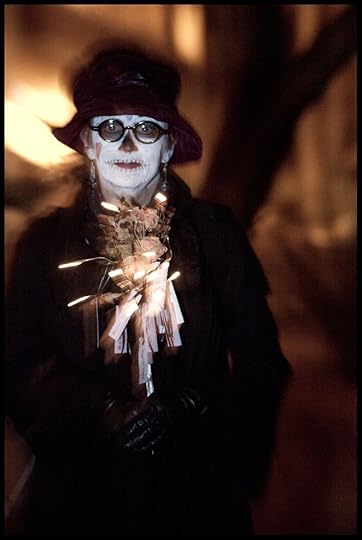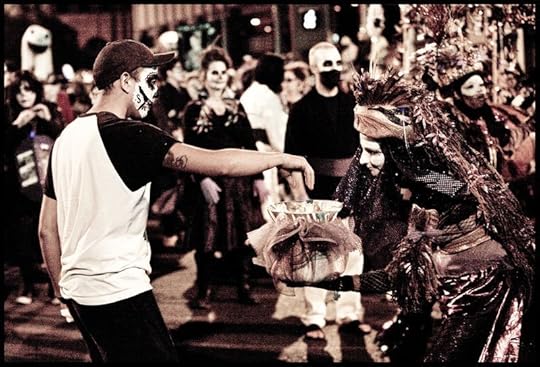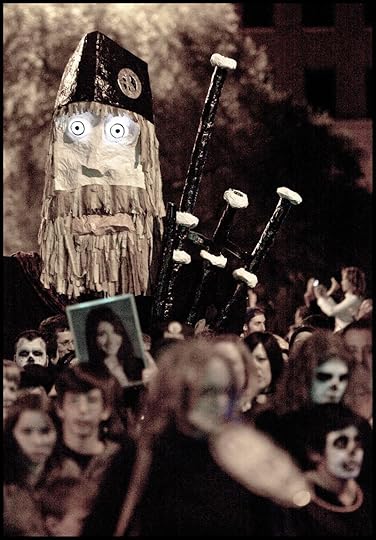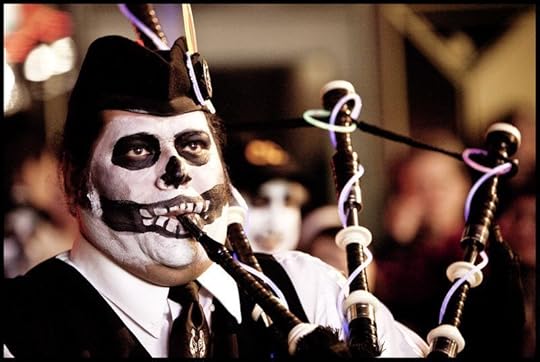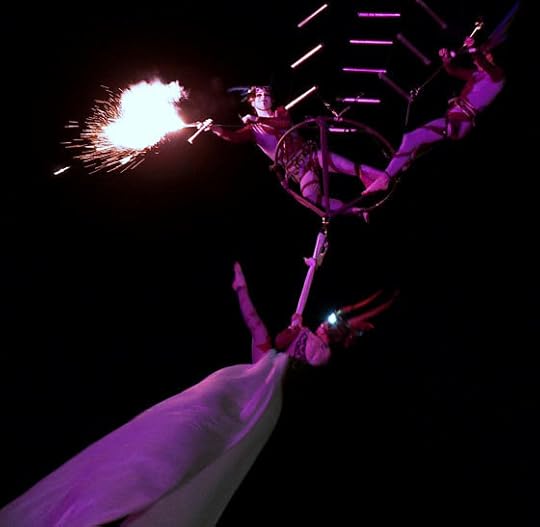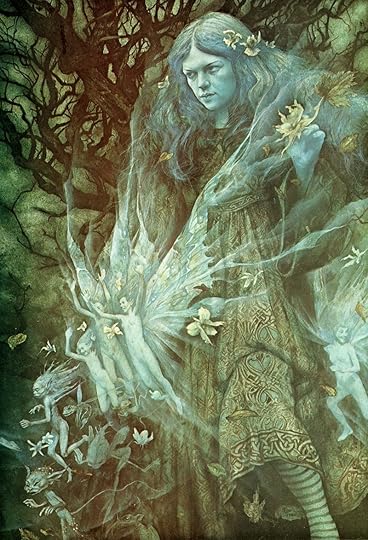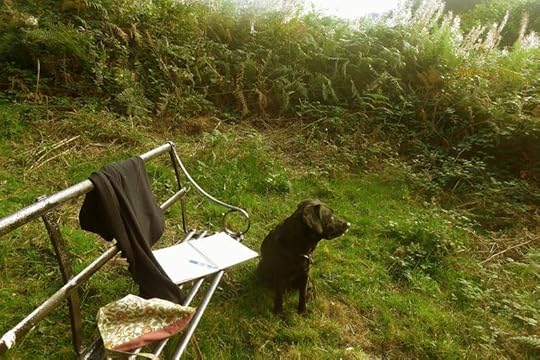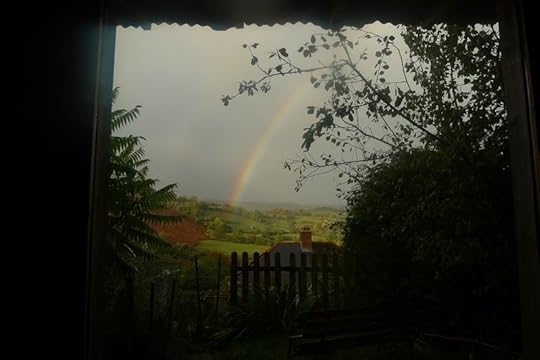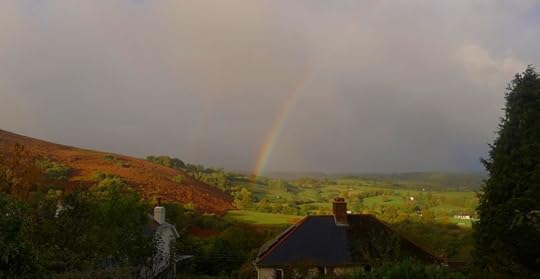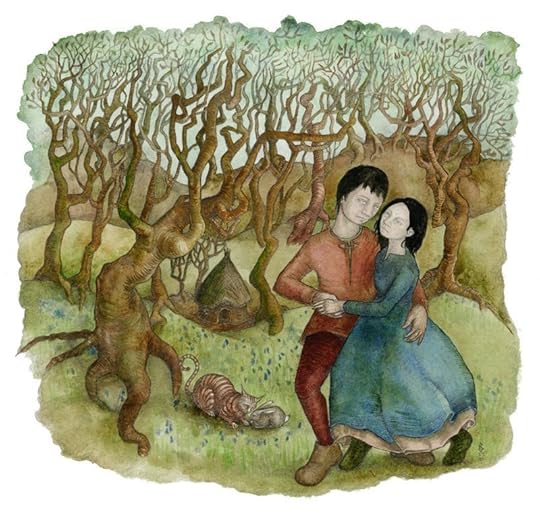Terri Windling's Blog, page 152
November 5, 2014
The Willingness to Finish
New York Quarterly: In your article about "The Artist as Housewife," you wrote about the willingness to finish things being a good measure as to whether one was an adult or not. Could you talk about this willingness to finish work as a special problem of the artist?
Erica Jong: I went for years without finishing anything. Because of course once you finish something you can be judged. My poems used to go through 360 drafts. I had poems that were re-written so many times I suspect it was just a way of avoiding sending them out.
New York Quarterly: You can see it very clearly now.
Erica Jong: When I look at some of those drafts, I realize that beyond I certain point I wasn't improving anything, I was just obsessing. I was afraid to take risks.
- an interview with Erica Jong in NYQ, No. 16, 1974 (reprinted in Conversations With Erica Jong)
''Why do I talk about the benefits of failure? Simply because failure meant a stripping away of the inessential. I stopped pretending to myself that I was anything other than what I was, and began to direct all my energy into finishing the only work that mattered to me.''
- J. K. Rowling ("The Fringe Benefits of Failure, and the Importance of Imagination," Harvard Magazine, Nov/Dec 2014)
''The refusal to rest content, the willingness to risk excess on behalf of one's obsessions, is what distinguishes artists from entertainers, and what makes some artists adventurers on behalf of us all.''
- John Updike (Assorted Prose)
In the studio
"My great hope is to laugh as much as I cry; to get my work done; and try to love somebody and have the courage to accept love in return." - Maya Angelou
Today, I am focused on getting my work done. Tilly has got the love part covered.
November 3, 2014
On Deadlines
It is ironic that after a series of posts dedicated to the value of "slowing down" in both life and art, I now face a stretch of time (after a period of poor health) in which I must pull out the stops and run full tilt in order to catch up on work again. Deadlines loom, the email box is crowded with neglected correspondence and my desk is littered with lists of Thing To Do, each one of them ridiculously long. So today, while I turn my focus to the daunting piles of work at hand, I pass the conversation to you, dear Readers, with this question:
How do you feel about creative deadlines, looming or otherwise? Do you find them helpful or harmful, inspiring or distressing...or some combination of the two? I've known writers and artists who can barely start without the pressure of a deadline, others for whom they're an intolerable burden -- but whatever part of this spectrum we inhabit, most of us must find ways to cope with deadlines, of one sort or another, if we want to send our work into a world where clocks and calendars rule.
"A deadline is, simply put, optimism in its most kick-ass form," says writing teacher Chris Baty encouragingly. "It's a potent force that, when wielded with respect, will level any obstacle in its path. This is especially true when it comes to creative pursuits.”
But Carl Honore, author of In Praise of Slowness, is a little more sceptical: "Your best ideas, those eureka moments that turn the world upside down, seldom come when you're juggling emails, rushing to meet the 5 P.M. deadline or straining to make your voice heard in a high-stress meeting. They come when you're walking the dog, soaking in the bath or swinging in a hammock."
Dani Shapiro (in her lovely book Still Writing) advises establishing regular internal deadlines rather than relying on the external sort, over which we tend to have less control. "Some writers count words," she says. "Others fill a certain number of pages, longhand, have a set number of hours they spend at their desk. It doesn't matter what the deal is that you strike with yourself, as long as you keep up your end of it, that you establish a working routine for yourself, a rhythm. I prefer to think of it as rhythm rather than discipline. Discipline calls to my mind a taskmaster, perhaps wielding a whip. Discipline has a whiff of punishment to it, or at least a need to cross something off a list, the way my son Jacob does his homework. (Big sigh. Got it done.) Rhythm, however, is a gentle aligning, a comforting pattern in our day that we know sets us up ideally for our work."
Of course, there are forms of creative work requiring adherence to strict deadlines whether they fit one's personal rhythms or not. "I write for a radio show that, no matter what, will go on the air Saturday at five o'clock central time, " says Garrison Keillor. "You learn to write toward that deadline, to let the adrenaline pick you up on Friday morning and carry you through, to cook up a monologue about Lake Wobegon and get to the theater on time."
Likewise, Isabel Allende notes: "From journalism I learned to write under pressure, to work with deadlines, to have limited space and time, to conduct and interview, to find information, to research, and above all, to use language as efficiently as possible and to remember always that there is a reader out there."
It's rare to be able to do creative work without deadlines as part of the art-making process, whether those deadlines are external or internal, dreaded or welcome, paralyzing or energizing. Is it possible to create effectively while the clock is ticking? Can one work both fast and well when required, and to do while maintaining a life that's slow, gentle, with a minimum of stress, and engaged with full attention?
Dear Readers, I'm endeavoring to find out. And while I do, I'm curious to hear what your own experience has been.
 A favorite "Calvin and Hobbs" cartoon by Bill Watterson.
A favorite "Calvin and Hobbs" cartoon by Bill Watterson.
Tunes for a Monday Morning
Béla Fleck and Abigail Washburn is a terrific new CD of American roots music from two of the world's best banjo players (now married and the parents of a 1-year-old son). Fleck and Washburn had distinguished separate careers before collaborating on The Sparrow Quartet: two banjos, cello and violin playing a heady mix of original songs and traditional Americana combined with a wide range of other musical influences. Now they're on the road as a duo, focusing on Appalachian murder ballads, bluegrass and other homegrown sounds.
Below, The Sparrow Quartet performs "Nobody's Fault But Mine" at the Greyfox Bluegrass Festival in 2008: Washburn and Fleck on banjo, Ben Sollee on cello, Casey Driessen on violin.
Below:
"And Am I Born to Die?" performed by Fleck and Washburn last month, showcasing the latter's gorgeous voice.
Next, a couple of tunes from their solo work...
First, "City of Refuge" performed by Abigail Washburn for NPR's "Tiny Desk Concert" series in 2011. (It's the first song on the video below.) Washburn spent a few years in China and had planned to move there permanently before discovering the banjo and embarking on a music career instead. Thus she often incorporates Chinese folk music and folk arts into her work, wrapped around American roots music and original compositions. In addition to her collaborations with Fleck, she has two solo albums, a collaborative album with David Liang, and two albums with the band Uncle Earl. I recommend them all.
Below:
"Over the Wall" by Béla Fleck and the Flecktones, from their 2007 album The Hidden Land. Fleck is legendary, of course, for innovative banjo music created over three decades and is arguably the best banjo player of our time. He's recorded dozens of albums with The New Grass Revival, The Flectones, various other musicans, and solo, and has won numerous music industry awards. The performance below is a perfect example of the interstitial, genre-hopping approach he takes to playing his instrument. In addition to Fleck, that's Jeff Coffin on flute, Roy Wooten on percussion, and Victor Wooten on bass guitar.
A little more banjo music this morning, starting with:
"Never Been Alive" by The Avett Brothers from North Carolina, filmed in rehearsal last year. (As you probably know by now, I adore these guys.) They've released eleven albums since 2002, the latest of which is Magpie and Dandelion. The band consists of Seth Avett (guitar), Scott Avett (banjo, picked in the "clawhammer" style), Bob Crawford (double bass), and Joe Kwon (cello).
I'm also might fond of The Punch Brothers from New York, filmed below performing "Rye Whiskey" in Sydney, Australia. That's the amazing Chris Thile (of Nickle Creek and other projects) on mandolin and lead vocals, Noam Pikelny on banjo, Gabe Witcher on fiddle, and Chris Eldridge on guitar. The song comes from their second album, Antifogmatic (2010).
And although this post is already a lengthy one, I can't resist one more:
"This Train Is Bound for Glory" performed by the glorious combination of Old Crow Medicine Show (Nashville, Tennessee), Edward Sharpe & the Magnetic Zeros (Los Angeles, California), and Mumford & Sons (London, UK).
If you'd like a little more banjo music this morning, try "Tennessee Bound" from Old Crow Medicine Show's latest album, Remedy, and "Appalachian Celtic Melody" by The Alison Brown Trio.
October 31, 2014
The dog is in the dog house
Tilly is currently in disgrace (and has had a bath she didn't want) after rolling in fresh fox scat again, which is quite extraordinarily pungent. Thank heavens for Fox Poo Shampoo. Which exists because, well, dogs do this.
October 30, 2014
Guest Post: Days of the Dead
Today's Guest Post concerns the annual "Día de los Muertos" festivities in Tucson, Arizona. Started by a single artist in 1990, Tucson's All Souls Procession has grown into a weekend-long event with close to 100,000 participants, including numerous art instalation and altars and a pyrotechnic Finale. - T.W.
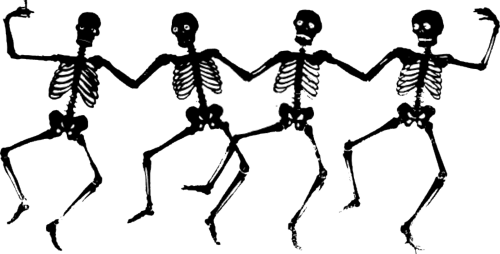
Tucson's All Souls Procession
photographs and text by Stu Jenks
Many in Western culture today seem to believe that we will never die. If we eat right, exercise and think good thoughts, we’ll live forever, and if not that, we’ll all die in our sleep, having been perfectly healthy the night before at the ripe old age of 107.
But we all know that’s not true.
Death is many things: The end of long suffering and illness; a sudden death due to accident, violence or overdose; a child dying far too soon; a peaceful transition from one life to the next; a quiet entering into the void; a life everlasting; or simply a great big dirt nap.
Any, all, or none of the above.
But one thing is not mysterious.
We will all die, every single one of us, and after we have died, friends, family, and loved ones will remember us, and most will miss that we are no longer around.
Tucson’s All Souls’ Procession Weekend is a remembrance of those who have died and the mysteries that surround them.
The weekend begins with an afternoon for children, and finishes with Sunday’s All Souls’ Procession and Finale -- when the Urn of full of prayers gathered from the crowd is spectacularly set alight -- leaving people stunned and awake, crying and smiling, somber and laughing, fearful and full of faith.
Every one I know who has participated in a Tucson All Souls’ Procession Weekend, as a walker, watcher, or performer, has a story of being unexpectedly moved, shaken, or awed.
"I saw ghosts rising from that vacant lot. I swear I did," said one acrobat, pointing across the street toward where an old city graveyard once sat.
"I really miss my daddy, so I’m making this," said a five year old girl working on a mini-shrine of twigs and grass in Armory Park for her deceased father.
"I felt my mother’s presence beside me the whole way," said one middle-aged woman, waiting to watch the Finale.
"I was brought to tears by the sounds of the bagpipes," said a man in a kilt as we ascended from beneath the Fourth Avenue underpass.
"Every time I saw Lois’s face projected on that big wall, I burst into tears,” said a woman, who stood on the roof of a warehouse along the route.
These stories are at the same time both personal and universal.
"What makes All Souls’ so amazing to me," said a long time walker of the Sunday Procession, "is we are all having this very personal experience while walking with thousands of other people, who are also having a very personal experience while walking with thousands of other people. It’s really hard to put into words."
Yes, it is.
 Images and text copyright by Stu Jenks; used with his permission. The photo titles are in the picture captions -- which can be viewed by running your cursor over the images.
Images and text copyright by Stu Jenks; used with his permission. The photo titles are in the picture captions -- which can be viewed by running your cursor over the images.
A book of All Souls images by Stu and other Tucson photographers ecan be purchased here, with proceeds benefiting the Procession.
October 29, 2014
"Into the Woods" series, 31: At the Death of the Year
In Celtic lore, October 31st is Samhain (All Hallow's Eve, or Halloween): the night when Arawn, lord of the Dead, rides the hills with his ghostly white hounds, and the Faery Court rides forth in stately procession across the land. In ancient times, hearth fires were smothered while bonfires blazed upon the hills, surrounded by circular trenches to protect all mortals from the faery host and the wandering spirits of the dead. In later centuries, Halloween turned into a night of revels for witches and gouls, eventually tamed into the modern holiday of costumes, tricks and treats.
Although the prospect of traffic between the living and the dead has often been feared, some cultures celebrated those special times when doors to the Underworld stood open. In Egypt, Osiris (god of the Netherworld, death, and resurrection) was drowned in the Nile by his brother Seth on the 17th of Athyr (November); each year on this night dead spirits were permitted to return to their homes, guided by the lamps of living relatives and honored by feasts. In Mexico, a similar tradition was born from a mix of indigenous folk beliefs and medieval Spanish Catholism, resulting in los Dias de Muertos (the Days of the Dead) -- a holiday  still widely observed across Mexico and parts of the American South-West. The holiday varies from region to region but generally take place over the days of October 31st, November 1st, and November 2nd, celebrated with graveyard gatherings and Carnival-like processions in the streets. Within the house, an ofrenda or offering is painstakingly assembled on a lavishly decorated altar. Food, drink, clothes, tequila, cigarettes, chocolates and children's toys are set out for departed loved ones, surrounded by candles, flowers, palm leaves, tissue paper banners, and the smoke of copal incense. Golden paths of marigold petals are strewn from the altar to the street (sometimes all the way to the cemetary) to help the confused souls of the dead find their way back home.
still widely observed across Mexico and parts of the American South-West. The holiday varies from region to region but generally take place over the days of October 31st, November 1st, and November 2nd, celebrated with graveyard gatherings and Carnival-like processions in the streets. Within the house, an ofrenda or offering is painstakingly assembled on a lavishly decorated altar. Food, drink, clothes, tequila, cigarettes, chocolates and children's toys are set out for departed loved ones, surrounded by candles, flowers, palm leaves, tissue paper banners, and the smoke of copal incense. Golden paths of marigold petals are strewn from the altar to the street (sometimes all the way to the cemetary) to help the confused souls of the dead find their way back home.
According to Fredy Mendez, a Totonac man from Veracruz: "Between 31 October and 2 November, past generations were careful always to leave the front door open, so that the souls of the deceased could enter. My grandmother was constantly worried, and forever checking that the door had not been shut. Younger people are less concerned, but there is one rule we must obey: while the festival lasts, we treat all living beings with kindness. This includes dogs, cats, even flies or mosquitoes. If you should see a fly on the rim of a cup, don't frighten it away -- it is a dead relative who has returned. The dead come to eat tamales and to drink hot chocolate. What they take is vapor, or steam, from the food. They don't digest it physically: they extract the goodness from what we provide. This is an ancient belief. Each year we receive our relatives with joy. We sit near the altar to keep them company, just as we would if they were alive. At midday on 2 November the dead depart. Those who have been well received go laden with bananas, tamales, mole and good things. Those who have been poorly received go empty handed and grieving to the grave. Some people here have even seen them, and heard their lamentations."
(In tomorrow's post, we'll look at the Day of the Dead festivities in Tucson, Arizona.)
In Greek mythology, Persephone regularly crosses the border between the living and the dead, dwelling half the year with her mother (the goddess Demeter) in the upper world, and half the year with her husband (Hades) in the realm of the dead below. In another Greek story, Orpheus follows his dead wife deep into Hades' realm, where he bargains for her life in return for a demonstration of his musical skills. Hades agrees to release the lovely Eurydice back to Orpheus, provided he leads his wife from the Underworld without looking back. During the journey, he cannot hear his wife's footsteps and so he breaks the taboo. Eurydice vanishes and the pathway to Land of the Dead is closed. A similar tale is told of Izanagi in Japanese lore, who attempts to reclaim his beloved Izanami from the Land of Shadows. He may take her back if he promises not to try to see Izanami's face -- but he breaks the taboo, and is horrified to discover a rotting corpse.
When we look at earlier Sumarian myth, we find the goddess Inana is more successful in bringing her lover, Dumuzi, back from the Underworld; in Babylonian myth, this role falls to Ishtar, rescuing her lover Tammuz: "If thou opens not the gate," she says to the seven gatekeepers of the world below, "I will smash the door, I will shatter the bolt, I will smash the doorpost, I will move the doors, I will raise up the dead, eating the living, so that the dead will outnumber the living." During the three days of Ishtar's descent, all sexual activity stops on earth. The third day of the drama is the Day of Joy, the time of ascent, resurrection and procreation, when the year begins anew.
Coyote, Hermes, Loki, Uncle Tompa and other Trickster figures from the mythic tradition have a special, uncanny ability to travel between mortal and immortal realms. In his brilliant book Trickster Makes This World: Michief, Myth, & Art, Lewis Hyde explains that Trickster is the lord of in-between:
"He is the spirit of the doorway leading out, and the crossroads at the edge of town. He is the spirit of the road at dusk, the one that runs from one town to another and belongs to neither. Travellers used to mark such roads with cairns, each adding a stone to the pile in passing. The name Hermes once meant 'he of  the stone heap,' which tells us that the cairn is more than a trail marker -- it is an altar to the forces that govern these spaces of heightened uncertainty. The road that Trickster travels is a spirit road as well as a road in fact. He is the adept who can move between heaven and earth, and between the living and the dead."
the stone heap,' which tells us that the cairn is more than a trail marker -- it is an altar to the forces that govern these spaces of heightened uncertainty. The road that Trickster travels is a spirit road as well as a road in fact. He is the adept who can move between heaven and earth, and between the living and the dead."
Trickster is one of the few who passes easily through the borderlands. The rest of us must confront the guardians who rise to bar the way: the gods, faeries, and supernatural spirits whose role is to help or hinder our passage over boundaries and through gates, thresholds, and liminal states of mind. In folk tales, guardians can be propitiated, appeased, outwitted, even slain -- but often at a price which is somewhat higher than one really wants to pay.
On Samhain, we cross from the old year to the new -- and that moment of crossing, as the clock strikes the midnight hour, is a time of powerful enchantment. For a blink of an eye we stand poised between two years, two tales, two worlds; between the living and the dead, the mortal and the fey. We must remember to give food to Hecate, wine to Janus, and flowers, songs, smoke, and dreams to the gate-keepers along the way. Shamans, artists, storytellers: they all cast paths of spells, stories, and marigold petals for us to follow, keeping us safe until the sun rises and the world begins anew.
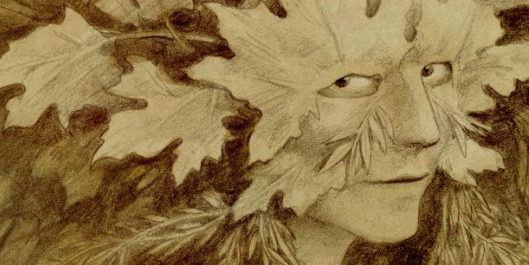 The art above is by Brian Froud, from The Land of Froud, Good Faeries/Bad Faeries, The Runes of Efland (with Ari Berk) and Trolls (with Wendy Froud). His latest book is Faeries' Tales, written and co-illustrated by Wendy Froud.
The art above is by Brian Froud, from The Land of Froud, Good Faeries/Bad Faeries, The Runes of Efland (with Ari Berk) and Trolls (with Wendy Froud). His latest book is Faeries' Tales, written and co-illustrated by Wendy Froud.
In praise of teachers, wherever we find them
From "What It is I Think I'm Doing Anyhow" by Toni Cade Bambara (1939-1995):
"As a mother, teacher, writer, community worker, neighbor, I'm concerned about accurate information, verifiable facts, sound analyses, responsible research, principled study, and people's assessment of the meaning of their lives. I'm interested in usable truths. Which means rising above my training, thinking better than I've been taught, developing a listening habit, making the self available to intelligence, engaging in demystification, and seeking out teachers at every turn. In many respects, my writings are notebooks I'm submitting to those teachers for examination.
"There have been a host of teachers. Once I thought anyone with enthusiasm about information was a good teacher. Then, anyone with an analysis of this country...who could help me decide how to put my wrath and my skills to the service of folks who sustain me. Later, anyone who could throw open the path and lead me back to the ancient wisdoms was a teacher. In more recent times, any true dialectition (material/spiritual) who could increase my understanding of all, I say all, the forces afoot in the universe was a teacher. I'm entering my forties now, with more simplistic criteria -- anyone with a greater capacity for love than I is a valuable teacher. And when I look back on the body of book reviews I've produced in the past fifteen years, for all their socioideolitero brilliant somethingorother, the underlying standard always seems to be -- Does this here author genuinely love his/her community?"
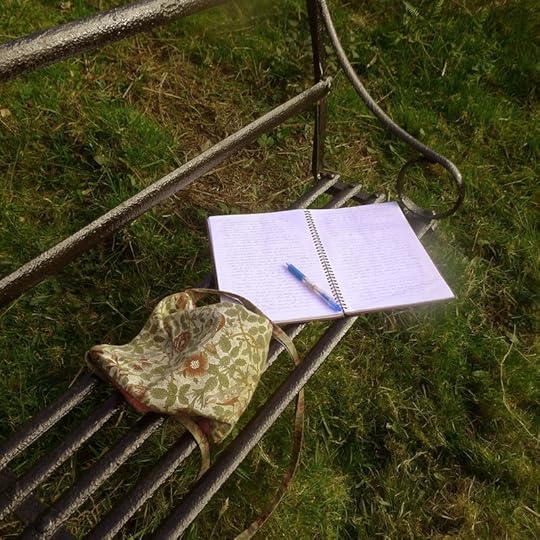
There is...the pride of thinking oneself without teachers.
The teachers are everywhere. What is wanted is a learner.
In ignorance is hope. If we had known the difficulty, we would not have learned even so little.
Rely on ignorance. It is ignorance that teachers will come to.
They are waiting, as they always have, beyond the edge of the light.
- Wendell Berry ("Healing")
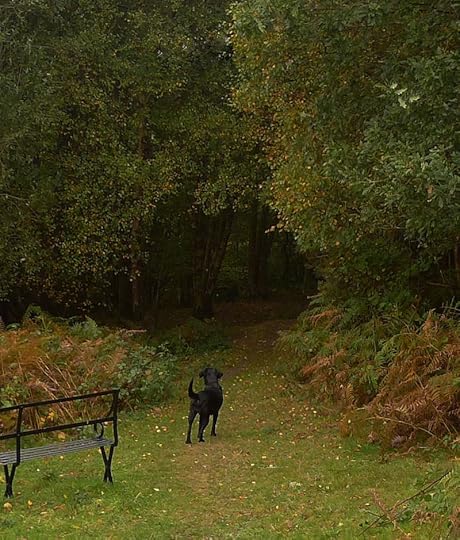
"If you have no faith in yourself, then have faith in the things you call truth. You know what must be done. You may not have courage or trust or understanding or the will to do it, but you know what must be done. You can't turn back. There is no answer behind you. You fear what you cannot name. So look at it and find a name for it. Turn your face forward and learn."
- Patricia A. McKillip (The Riddle-Master of Hed)
 Bambara's essay can be found in Black Women Writers on Their Work 14. Berry's poem/essay can be found in his collection What Are People For?. The Riddle-Master of Hed is the first book in Pat McKillip's gorgeous Riddle-Master Trilogy, highly recommended. Images above: Lower Nattadon Hill on a misty autumn morning.
Bambara's essay can be found in Black Women Writers on Their Work 14. Berry's poem/essay can be found in his collection What Are People For?. The Riddle-Master of Hed is the first book in Pat McKillip's gorgeous Riddle-Master Trilogy, highly recommended. Images above: Lower Nattadon Hill on a misty autumn morning.
October 28, 2014
Mysteries and miracles
Over the last couple of weeks here we've been talking about slowing down, paying attention, being fully present whatever we live, within the lives that we live and the work that do. Yet sometimes ... too often ... life knocks us off-center and we struggle to regain our sense of hózhó (as the Navajo call it): of balance and "walking in beauty." How do we re-center ourselves in the art-making process (or, indeed, in the life-making process) when this happens?
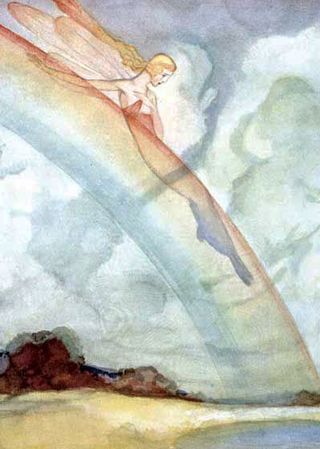 Wendell Berry proffers this insight in his essay collection Standing by Words: "What can turn us...back into the sphere of our being, the great dance that joins us to our home, to each other and to other creatures, to the dead and unborn? I think it is love. I am perforce aware how baldly and embarrassingly that word now lies on the page -- for we have learned at once to overuse it, abuse it, and hold it in suspicion. But I do not mean any kind of abstract love (adolescent, romantic, or "religious"), which is probably a contradiction in terms, but particular love for particular things, places, creatures, and people, requiring stands, acts, showing its successes and failures in practical or tangible effects. And it implies a responsibility just as particular, not grim or merely dutiful, but rising out of generosity. I think that this sort of love defines the effective range of human intelligence, the range within its works can be dependably beneficent. Only the action that is moved by love for the good at hand has the hope of being responsible and generous. Desire for the future produces words that cannot be stood by. But love makes language exact, because one loves only what one knows."
Wendell Berry proffers this insight in his essay collection Standing by Words: "What can turn us...back into the sphere of our being, the great dance that joins us to our home, to each other and to other creatures, to the dead and unborn? I think it is love. I am perforce aware how baldly and embarrassingly that word now lies on the page -- for we have learned at once to overuse it, abuse it, and hold it in suspicion. But I do not mean any kind of abstract love (adolescent, romantic, or "religious"), which is probably a contradiction in terms, but particular love for particular things, places, creatures, and people, requiring stands, acts, showing its successes and failures in practical or tangible effects. And it implies a responsibility just as particular, not grim or merely dutiful, but rising out of generosity. I think that this sort of love defines the effective range of human intelligence, the range within its works can be dependably beneficent. Only the action that is moved by love for the good at hand has the hope of being responsible and generous. Desire for the future produces words that cannot be stood by. But love makes language exact, because one loves only what one knows."
For Berry, it all comes back to place. "I stand for what I stand on," he says: the local landscape, the local community: human, animal, and vegetable alike. ''I see that the life of this place is always emerging beyond expectation or prediction or typicality," he writes, "that it is unique, given to the world minute by minute, only once, never to be repeated. And this is when I see that this life is a miracle, absolutely worth having, absolutely worth saving. We are alive within mystery, by miracle."
And that, for me, is precisely where art, inspiration, balance and beauty can be found: within mystery, by miracle: the everyday miracles of the place we call home. The leaves turning gold. A partner's sweet smile. The good scent of coffee on a cold autumn morning. A rainbow outside the studio window, there for one minute and gone in the next.
"The grace that is the health of teachers can only be held in common," says Berry (in his poem "Healing"):
The love and the work of friends and lovers belongs to the task, and are its health.
Rest and rejoicing belong to the task, and are its grace.
Let tomorrow come tomorrow. Not by your will is the house carried through the night.
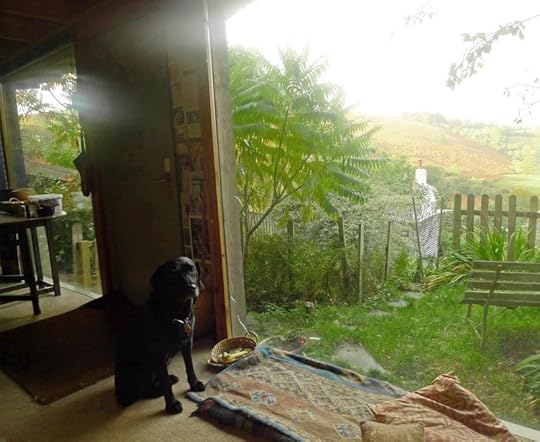 Photographs above: Last week's rainbow over Meldon Hill. Illustration: "Rainbow Fairy" by Willy Pogány (1882-1955). The second Berry quote comes from Life As Miracle: An Essay Against Modern Superstition, and the last lines come from "Healing" in What Are People For?.
Photographs above: Last week's rainbow over Meldon Hill. Illustration: "Rainbow Fairy" by Willy Pogány (1882-1955). The second Berry quote comes from Life As Miracle: An Essay Against Modern Superstition, and the last lines come from "Healing" in What Are People For?.
October 27, 2014
A reminder
The Hedgespoken crowdfunding campaign (created by Rima Staines & Tom Hirons) is still underway at Indiegogo. They're close to the half-way point but have reached the "slow middle" -- so if you can help with a donation or by spreading the word, please do. I'm very much hoping that the Mythic Arts community can get this Mythic-Art-on-Wheels project fully funded and on the road.
For more information on the project, see my previous Hedgespoken post, read Tom & Rima's description of what the Hedgespoken truck will be used for (a traveling home for them, but also so much more), and visit the Hedgespoken blog for regular updates (and other cool stuff).
Terri Windling's Blog
- Terri Windling's profile
- 708 followers


